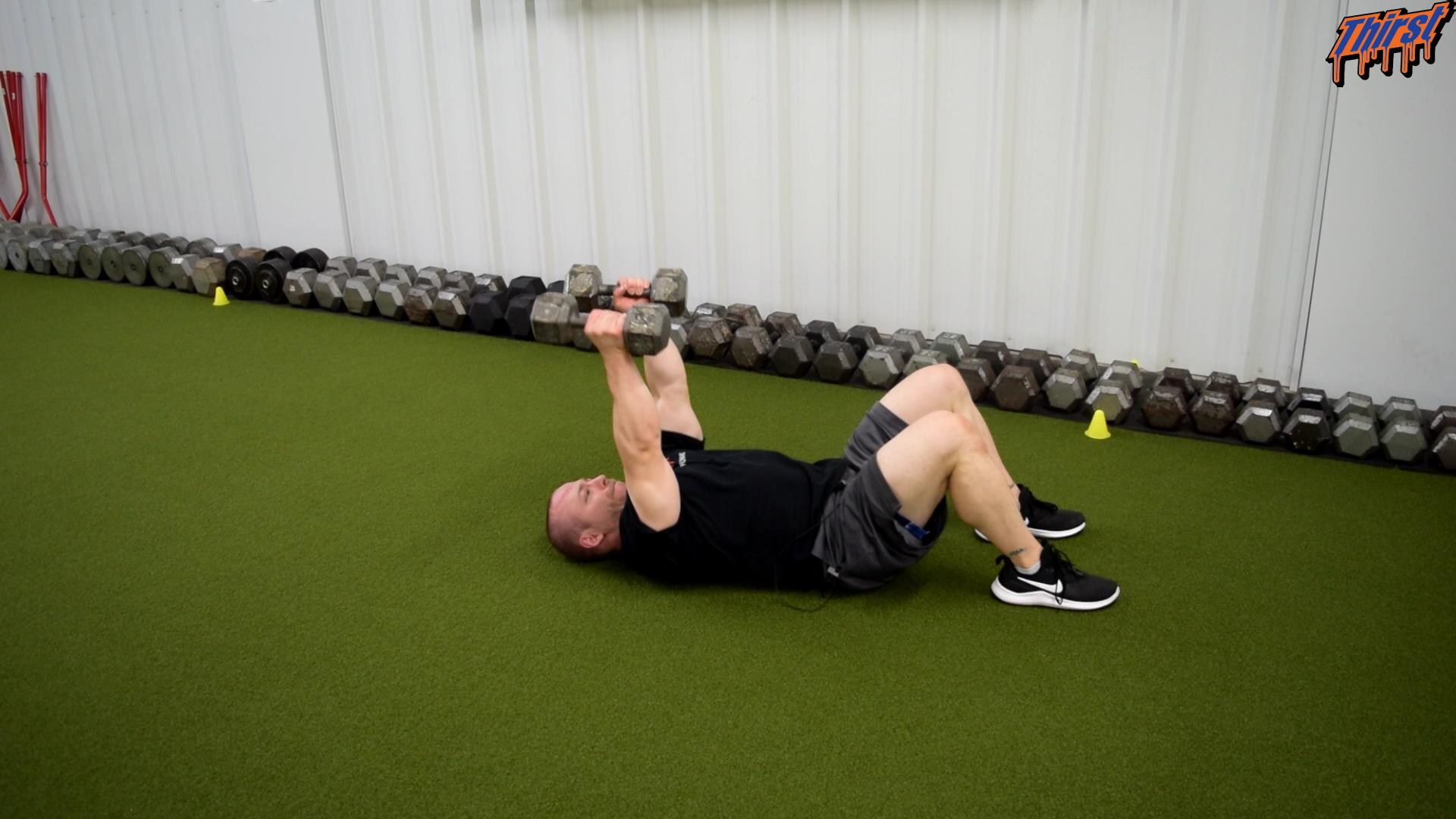The Rolling Tricep Extension: A Powerlifting Game-Changer for Bench Press Strength
The rolling tricep extension, also known as the dumbbell rolling tricep extension, represents one of the most effective accessory movements for building explosive tricep strength and improving bench press performance. This specialized exercise has become a staple in powerlifting circles and sports performance training programs, offering unique benefits that traditional tricep exercises simply cannot match.
Watch the video below on how to maximize this exercise.
What Makes the Rolling Tricep Extension Special?
Unlike conventional tricep exercises that emphasize controlled, strict movement patterns, the rolling tricep extension incorporates a dynamic, explosive element that directly translates to improved bench press power. The exercise resembles a dumbbell skull crusher in setup, but the execution creates an entirely different training stimulus.
The key distinguishing feature lies in the dead stop component. When the dumbbells come to a complete rest on the floor at the bottom of each repetition, your tricep muscles must overcome inertia and re-fire explosively to initiate the next rep. This pause-and-explode mechanism develops the type of starting strength that powerlifters desperately need when pressing heavy weights off their chest.
Understanding the Biomechanics
The rolling tricep extension specifically targets the long head of the tricep muscle, which plays a crucial role in bench press lockout strength. When performed correctly, the exercise places the tricep in a stretched position with the humerus perpendicular to the floor, maximizing the involvement of the long head fibers.
This positioning creates several training advantages. First, the stretch position allows for greater muscle activation and development of the tricep’s full range of motion. Second, the explosive nature of the movement develops fast-twitch muscle fibers, which are essential for generating maximum power during competitive lifts.
Perfect Technique: Step-by-Step Execution
Mastering the rolling tricep extension requires attention to several critical technique points that differentiate it from similar exercises.
Setup and Starting Position Begin by lying flat on the floor with dumbbells positioned beside your head. Your elbows should be elevated and positioned directly over your shoulders, creating the same arm angle you would use for a traditional dumbbell skull crusher. The key difference is that your dumbbells start in contact with the floor rather than held in the air.
Grip and Hand Positioning Hold the dumbbells with your hands positioned toward the edges of the weight plates rather than centered on the handle. This grip adjustment provides better control during the explosive portion of the movement and allows for more effective wrist snap at the top of the extension.
The Explosive Extension From the dead stop position, explosively drive the dumbbells upward with the intention of throwing them across the room. This mental cue encourages maximum force production and ensures you’re generating the explosive power that makes this exercise so effective. Complete the movement with full tricep extension, including a forward wrist snap that maximizes the contraction of the tricep muscle.
The Controlled Descent Lower the dumbbells back to the starting position with control, allowing them to come to a complete dead stop before beginning the next repetition. This pause is crucial for maintaining the exercise’s unique training effect.
Common Mistakes and How to Avoid Them
The most frequent error occurs when lifters allow their arm position to shift during the movement. Many people inadvertently roll their elbows down and outward, transforming the exercise into a dumbbell bench press motion. This deviation eliminates the tricep-specific benefits and reduces the exercise’s effectiveness for improving bench press lockout strength.
To maintain proper form, focus on keeping your humerus perpendicular to the floor throughout the entire range of motion. Your elbows should remain high and stationary, with all movement occurring at the elbow joint through tricep contraction.
Programming the Rolling Tricep Extension
Given the explosive nature and heavy loading potential of this exercise, programming should reflect its demanding character. Most lifters will benefit from performing three to five sets of six to ten repetitions, treating this as a primary accessory movement rather than high-volume isolation work.
The rolling tricep extension works best when programmed after your main bench press work or supplemental pressing movements like board presses. This sequencing allows you to attack the exercise with adequate energy while still providing the tricep-specific stimulus needed to improve your pressing strength.
Consider this exercise as a tier-one accessory movement, meaning it should take priority over other tricep isolation exercises in your program. The carryover to bench press performance is substantial, making it an invaluable tool for powerlifters looking to break through pressing plateaus.
Applications Beyond Powerlifting
While powerlifters may be the primary beneficiaries of the rolling tricep extension, the exercise has valuable applications in sports performance training. Football players preparing for combine testing, particularly the 225-pound bench press repetition test, can use this movement to develop the explosive tricep strength needed for maximum repetitions.
The exercise also benefits athletes in sports requiring pushing power, such as football linemen who need to extend their arms forcefully to control opponents. The combination of strength and explosiveness developed through rolling tricep extensions translates directly to these athletic demands.
Why This Exercise Works
The rolling tricep extension succeeds because it addresses a specific weakness in many lifters’ bench press technique: the ability to generate explosive force from a stretched position. Traditional tricep exercises often fail to replicate the demands of heavy bench pressing, where the triceps must fire powerfully to lock out heavy weights.
By incorporating the dead stop element, this exercise forces your nervous system to recruit maximum motor units instantaneously, developing the type of explosive strength that directly improves bench press performance. The result is not just stronger triceps, but triceps that can generate force more rapidly when it matters most.
For serious lifters looking to maximize their bench press potential, the rolling tricep extension represents an essential tool that bridges the gap between accessory work and competition performance.








